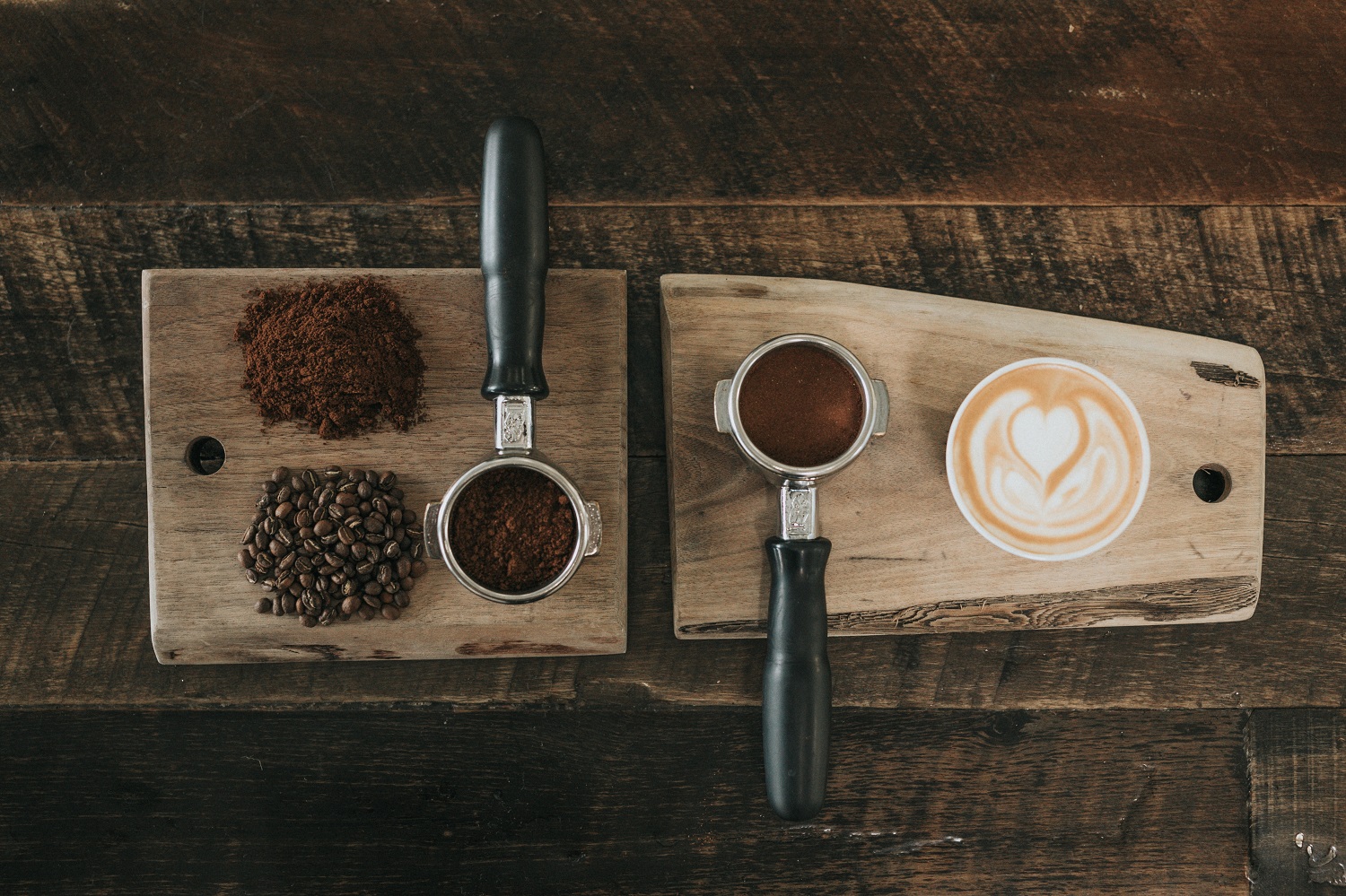
Coffee is good for more than just waking you up in the morning! There are plenty of options to recycle your spent coffee grounds in and around the house.
You can use it in the garden to feed plants and to chase away snails, ants and cats. It removes scratches from furniture, helps you clean pots and pans, fights bad odours (e.g. in the refrigerator), can be used to make candles or to clean out the fireplace. For your body it can be used as ingredient for soap, scrub, or facial creams, or to make dark hair shine.
But we don’t just drink coffee at home. We drink a lot of it at our workplaces, for example in the office, or in a bar or a coffeehouse. At these locations, large volumes of spent coffee grounds are left over. And although recycling programmes can manage food waste very well, they don’t always make optimal use of coffee waste.
Across the world enthusiastic pioneers, social and/or environmentally concerned entrepreneurs and established commercial businesses try making a living by producing valuable products from coffee waste. Today we take a look at some of these initiatives which valorise spent coffee grounds and turn them into consumables or durable products.
Coffee cups:
When studying in Italy, product designer Julian Lechner wondered what happens to all the coffee grounds after we have enjoyed our Espresso, Cappuccino or Americano. Would there not be a way to re-use this good and natural resource? And if so, what would it take to preserve it for good? Following years of experimenting, Julian founded a start-up, which uses spent coffee grounds and renewable raw materials (glues) to manufacture innovative durable products such as espresso and cappuccino cups. Not surprisingly, all these cups smell of coffee! Moreover, they are very light, and are dish washer safe.
Fabric and clothes:
In Taiwan a company has patented a technology to produce yarns from coffee waste. In the process, the characteristics of coffee grounds are somewhat preserved and transferred to the textile that is produced out of them. As a result, the fabrics made with this innovative technology have natural anti-odour qualities; they dry faster than cotton and give better UV-ray protection. Moreover, the textile feels fresh and has the capacity to cool down the temperature of the skin.
A wide range of products are made from this technology: shirts, bedding and footwear. Nothing gets wasted: the 11% coffee oil extracted from coffee grounds it is used in cosmetics and in layered clothing.
Furniture:
In the UK Adam Fairweather is the founder of a company that produces designer office furniture made from spent coffee grounds and post-consumer recycled plastic. The materials produced with this process is extremely robust, waterproof, scratch resistant and it doesn’t require sanding nor finishing because of its mat finish.
Lamps:
Lamp designers like Raúl Laurí Pla from Spain and Fermin Benedi Bayer from Germany discovered the potential that spent coffee grounds offer to produce table lamp, floor lamps and bowls. Raul’s series of lamps are made with natural binder. They are 100% natural, biodegradable and renewable and are still conserving coffee’s colour and they smell of coffee!
Printing ink:
After testing various natural pigments, San Diego, California based screen printers Alex White and John Mohr established that spent coffee grounds are an ideal ingredient for textile ink. To produce it, the grounds are mixed with vinegar, strained and then cooked to let extra fluid evaporate. This innovative ink is successfully used for printing t-shirts.
Biofuels
Spent coffee grounds contain around 18% oil. Both new and established companies acknowledge the energy potential of coffee waste.
In 2014 British entrepreneur Arthur Kay took top prize in the (Dutch) Postcode Lottery Green Challenge for sustainable entrepreneurs, for his start-up company, which processes spent coffee waste into pellets and larger, combustible “coffee logs”: a sustainable alternative to wooden logs.
Early on Kay’s company took part in a pilot project in the UK and produced 6,000 litres of coffee oil to make B20 biofuel which was later mixed with diesel to be added to the London bus fuel supply chain. For his idea to turn coffee waste into liquid fuels, Kay won the Shell LiveWIRE’s Innovation Award in 2013 and the Mayor’s Entrepreneur Programme in 2012.
More ideas?
The examples presented here are by no means the only potential (commercial) applications of coffee waste. Other (known and potential) uses include water filtering, air filtering, filler for road surfaces, flower pots, pencil, cosmetics, jewellery, etc. Do you know of another successful application? We’d be happy to hear from you!
Source
Supplier
Share
Renewable Carbon News – Daily Newsletter
Subscribe to our daily email newsletter – the world's leading newsletter on renewable materials and chemicals













